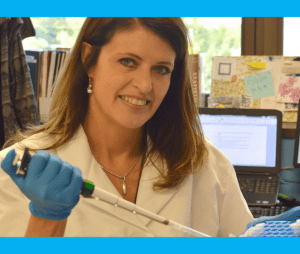Sjögren’s Diagnostic Biomarker Panel
Dry eyes. Dry mouth. These may not sound like the hallmarks of a debilitating illness. But for the up to 4 million Americans living with Sjögren’s syndrome, the inability to produce tears or saliva is a byproduct of their bodies’ systemic attacks on itself.
In Sjögren’s, immune cells attack moisture-producing glands, leading to painful dryness and decreased ability to produce tears or saliva. Common symptoms include severe dry eyes and dry mouth, as well as fatigue, arthritis and memory problems. Drops and preparations for dry eyes and mouth can help temporarily, but immunosuppressive medications may be necessary to manage internal organ issues or severe flares.
The disease’s symptoms often mimic those of other autoimmune diseases like lupus, rheumatoid arthritis, fibromyalgia or multiple sclerosis, making it difficult to diagnose. Currently, testing for biomarkers associated with Sjögren’s fails to identify close to 40% of those with the disease. This leaves clinicians to rely on invasive and painful lip biopsies for complete diagnosis.
Over the past 15 years, OMRF has built a unique collection of biological samples gathered from patients in our Sjögren’s research clinic. The samples provide OMRF researchers with access to biological materials that are essential to developing new ways to diagnose and treat the disease, which has increasingly become a drug development target for pharmaceutical and biotech companies.
 Working with OMRF’s repository of Sjögren’s patient samples, Dr. Darise Farris has identified a distinct panel of biomarkers that stand to improve in the diagnosis of the disease. Specifically, she’s found a group of autoantibodies, proteins that mistakenly target and react with a person’s tissues and organs, that are strongly correlated with Sjögren’s.
Working with OMRF’s repository of Sjögren’s patient samples, Dr. Darise Farris has identified a distinct panel of biomarkers that stand to improve in the diagnosis of the disease. Specifically, she’s found a group of autoantibodies, proteins that mistakenly target and react with a person’s tissues and organs, that are strongly correlated with Sjögren’s.
“Early and accurate diagnosis is crucial,” Farris says. “If we can get out ahead of the disease, treatment can help lessen the severe damage that can occur in salivary glands and other organs.”
If you’re interested in learning more about licensing opportunities for this technology, please contact Ryan Downing.
Welcome, Dr. Shah
 Earlier this year, we welcomed Dr. Hemangi Shah as the newest member of OMRF’s Office of Technology Ventures. For Dr. Shah, it’s a homecoming of sorts, as she previously worked as a post-doctoral researcher in OMRF’s Arthritis & Clinical Immunology Research Program.
Earlier this year, we welcomed Dr. Hemangi Shah as the newest member of OMRF’s Office of Technology Ventures. For Dr. Shah, it’s a homecoming of sorts, as she previously worked as a post-doctoral researcher in OMRF’s Arthritis & Clinical Immunology Research Program.
In her new role, Shah serves as a technology development specialist. That means managing collaborations between foundation scientists and industry partners, OMRF’s patent applications, and our portfolio of U.S. and international patents.
She holds a bachelor’s degree in medicine and surgery from the Grant Medical College in Mumbai, India, and a doctorate in microbiology and immunology from the University of Oklahoma Health Sciences Center. After completing her post-doc at OMRF, she worked at Oklahoma City’s Accele Biopharma, Inc. and, most recently, as a staff scientist and project manager at OUHSC.
Dr. Shah will use her skills to assess OMRF technologies in the labs for opportunities to patent intellectual property and license those technologies to industry. She’s already proven a wonderful addition to our team, and we are thrilled to welcome her back to OMRF.
Andrew Westmuckett, Ph.D.
Director, Technology Ventures
Get BioBlast delivered to your inbox — sign up here.




